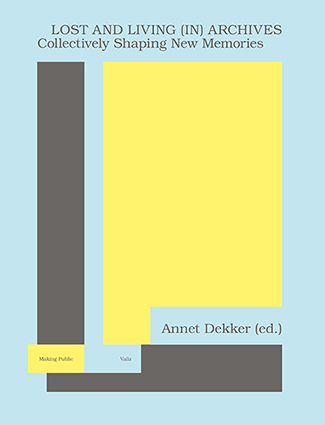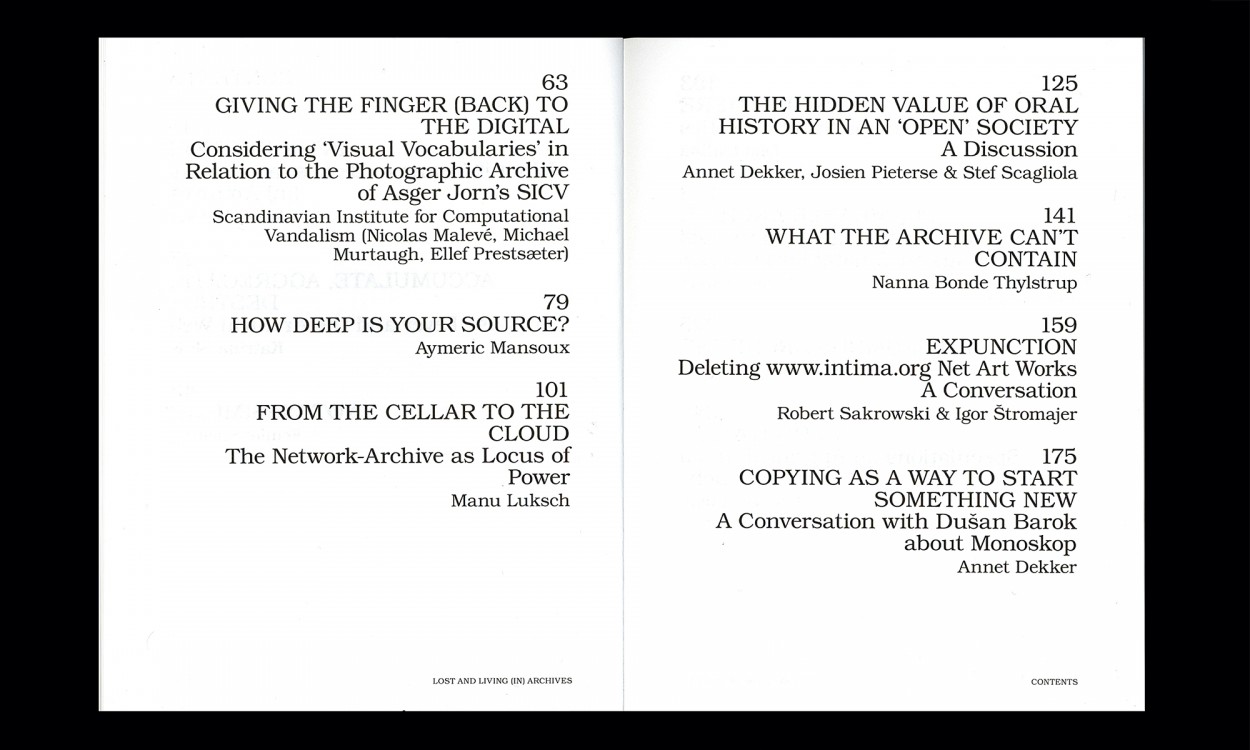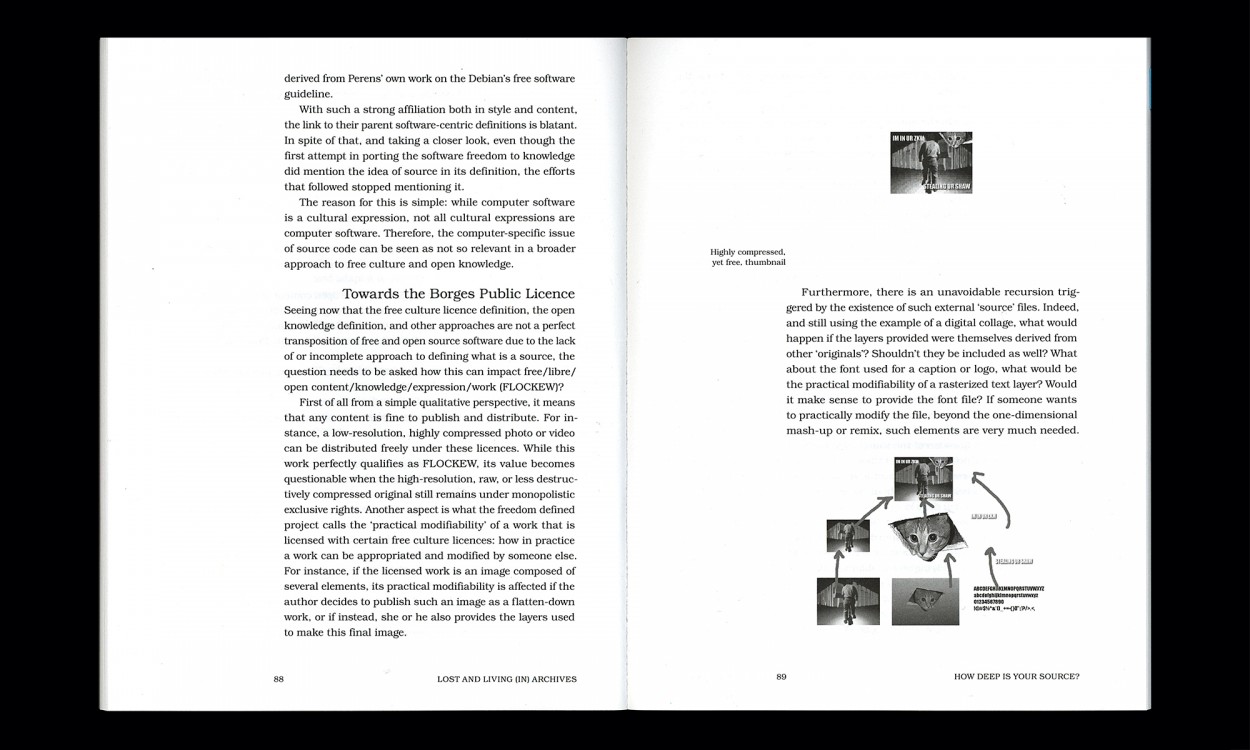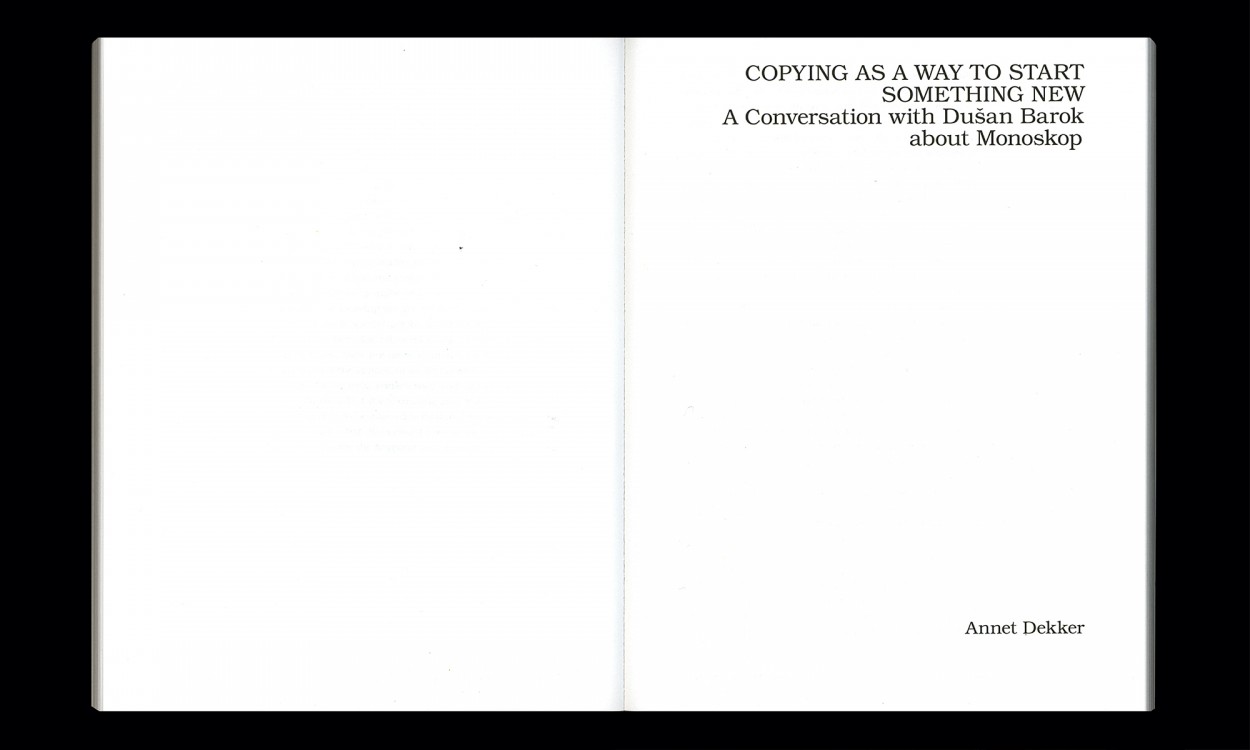Lost and Living (in) Archives
Collectively Shaping New Memories

- On the changing role of archives in the digital age
- Do 'Living Archives' provide a space for erased, forgotten, neglected and new memories
Editor: Annet Dekker
Design: Template Studio
Series: making Public
2017, Valiz | supported by Creative Industries Fund, NL, Piet Zwart Institute: Media Design | paperback | 288 pp. | 22 x 17 cm (h x w) | English | ISBN 978-94-92095-26-8
Press
- Neural: Lost and Living (in) Archives, Collectively Shaping New Memories
Archives are collections of records that are preserved for historical, cultural and evidentiary purposes. As such, archives are considered as sites of a past, places that contain traces of a collective memory of a nation, a people or a group. Digital archives have changed from stable entities into flexible systems, at times referred to with the term ‘Living Archives’. In which ways has this change affected our relationship to the past? Will the erased, forgotten and neglected be redeemed, and new memories be allowed? Will the fictional versus factual mode of archiving offer the democracy that the public domain implies, or is it another way for public instruments of power to operate? Lost and Living (in) Archives shows that archives are not simply a recording, a reflection, or an image of an event, but that THEY shape the event itself and thus influence the past, present and future.
Contributors: Babak Afrassiabi, Dušan Barok, Tina Bastajian, Nanna Bonde Thylstrup, Özge Çelikaslan, Annet Dekker, Olia Lialina, Manu Luksch, Nicolas Malevé, Aymeric Mansoux, Michael Murtaugh, Josien Pieterse, Ellef Prestsæter, Robert Sakrowski, Stef Scagliola, Katrina Sluis, Femke Snelting, Igor Štromajer, Nasrin Tabatabai












